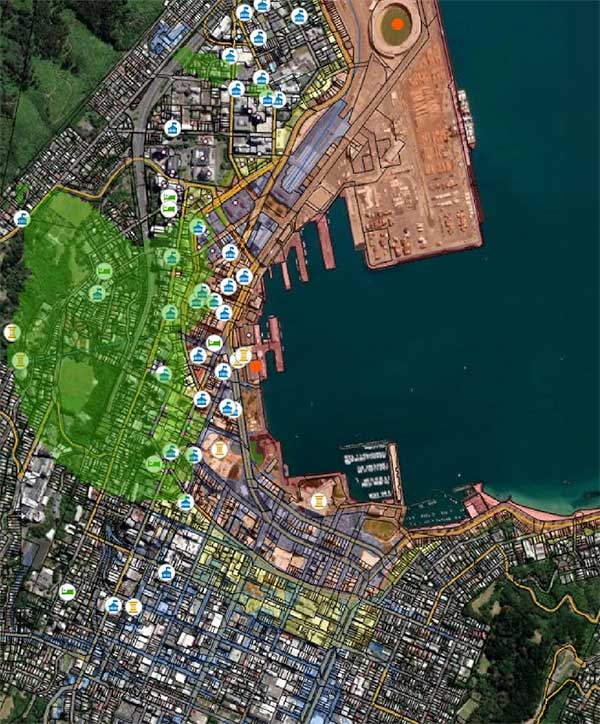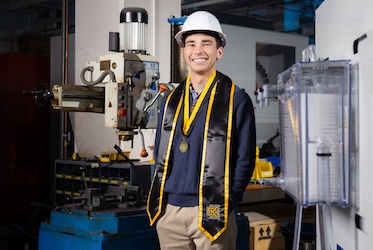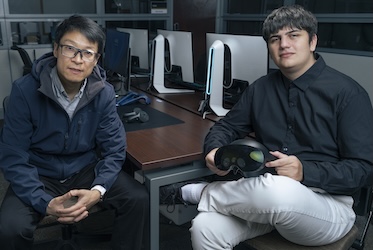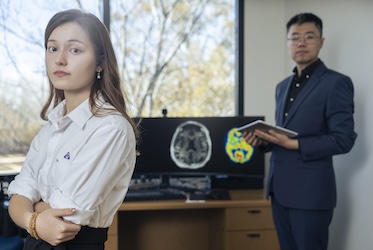

KENNESAW, Ga. | Feb 17, 2022
A group of Kennesaw State University undergraduate students spent fall semester determining the best locations for the U.S. Department of State to build future embassies. The project was one of just three nationally selected to be presented to top State Department officials.
The students from the Department of Geography and Anthropology and Department of Architecture were tasked with analyzing spatial data in countries all over the world to pinpoint the best locations for new U.S. embassies. The research, led by professor Uli Ingram, was part of the Diplomacy Lab program, a public-private partnership where the State Department accepts bids from universities to research a variety of foreign policy challenges. Kennesaw State was accepted into the Diplomacy Lab program two years ago and is one of 43 universities participating each semester.
Every year, the State Department puts out a call for proposals on projects that cover a range of disciplines. Ingram worked with KSU’s Diplomacy Lab director Sherrill Hayes to submit a proposal for the GIS project, and her team of students was selected to complete the research during the Fall 2021 semester.
The students presented their findings to the project’s sponsor, the Bureau of Overseas Building Operations (OBO) at the end of the semester. In early 2022, they found out they were one of three groups selected to present at Diplomacy Lab Demo Day. The selection marks a unique opportunity to present their research to a larger group of State Department officials.

The research parameters into the best locations for new U.S. embassies included accessibility, convenience, safety and security. Among other things, locations should be close to public transportation, close to other foreign missions or government buildings, outside of known natural hazard zones like floodplains or tsunami zones, and large enough to accommodate the embassy and all applicable safety buffers.
Using ArcGIS software and geocoding, the students found parcels of land that met the stated criteria and others that fell short. The data was exported into interactive, searchable web apps so the OBO can use it when determining where to build upcoming U.S. Embassy buildings.
“It is a great opportunity for our students,” Ingram said. “Their work ethic and responsibility increased so significantly because we delivered this to the State Department. We worked toward a real-world project, and hopefully at some point they will build an embassy at a site that we proposed.”
During the presentation, which was held virtually, several officials told the students how vital their work is to the State Department.
“You are literally the future of foreign policy, you are the future of the Department of State,” said Thomas Debass, managing director for the Office of Global Partnership. “American leadership can only be maintained if students like you continue to engage with us, and hopefully you can join our ranks.”
When asked if any KSU students were interested in pursuing this type of work after graduation, MaKenna Chambers smiled.
“I would love to,” she said. “I do plan on going into a geospatial-related field. It was a very fun project and really enhanced my interest in this type of work.”
Ingram worked with students Grace Shirley, MaKenna Chambers, Cheyenne Feltman, Alaina Ellis and Andrew Bailey throughout the semester to complete this important research.
– Abbey O’Brien Barrows

Discipline and determination drive track and classroom success for graduating student-athlete

Student, faculty researchers explore how AI can improve STEM learning through virtual reality

Student, faculty researchers use AI to improve early detection and diagnosis of Alzheimer's disease

Kennesaw State researchers use drones, artificial intelligence to improve disaster response
A leader in innovative teaching and learning, Kennesaw State University offers undergraduate, graduate, and doctoral degrees to its more than 51,000 students. Kennesaw State is a member of the University System of Georgia with 11 academic colleges. The university's vibrant campus culture, diverse population, strong global ties, and entrepreneurial spirit draw students from throughout the country and the world. Kennesaw State is a Carnegie-designated doctoral research institution (R2), placing it among an elite group of only 8 percent of U.S. colleges and universities with an R1 or R2 status. For more information, visit kennesaw.edu.